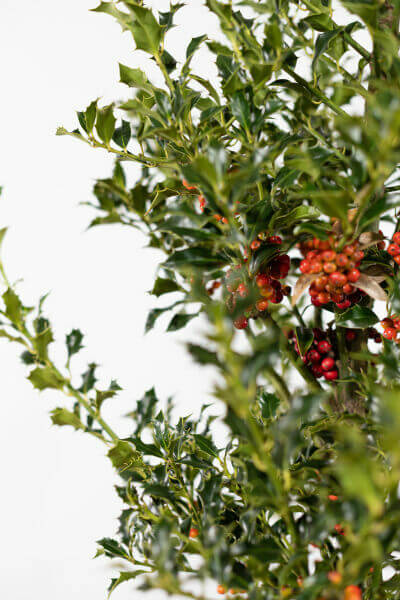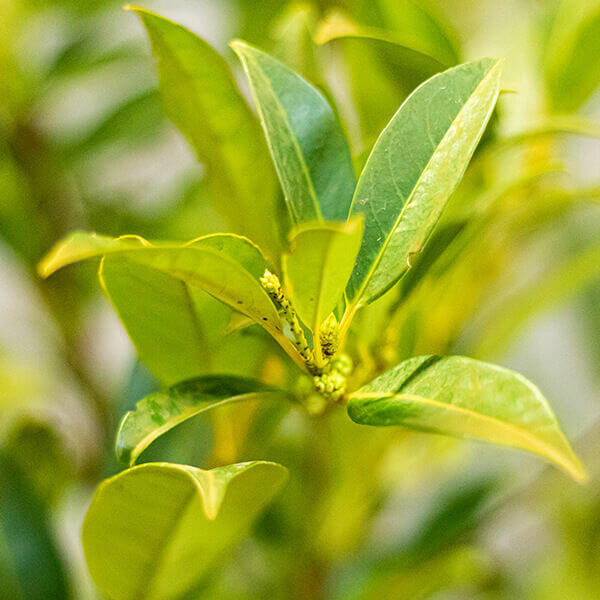Hedge Plants For Playground Borders
Hedge Plants For Playground Borders
Blog Article
Best Hedging Plants For Terrace Gardens
Boost your garden's allure with rich hedge ranges such as Yew (Taxus), Thuja, Laurel, Photinia, and Bamboo, celebrated for their structural integrity and environmental advantages.
Yew and Thuja provide evergreen coverage and winter season resilience, while Laurel provides quick growth and broad, aromatic leaves.
Photinia adds seasonal beauty with its vibrant red foliage, and Bamboo lends a low-maintenance, tranquil ambiance.
These hedges enhance air quality, minimize noise, and produce tranquil, private spaces.
Appropriate planting, spacing, and upkeep ensure vigorous development and ecological harmony.
Check out how these lavish varieties can elevate your garden's charm and well-being.
Key Takeaways
Change Your Garden With Lush Hedge Ranges
- Select Yew for its thick, evergreen development and unrivaled durability.
- Go with Laurel for its quick development and broad leaves, ensuring quick personal privacy.
- Pick Photinia for its lively seasonal foliage, which turns a striking dark red.
- Utilize Bamboo for a low-maintenance, winter-hardy hedge with aesthetic appeal.
- Space plants 2-3 per meter and prune routinely for ideal growth and health.
Popular Hedge Plants
When transforming a garden with rich hedge ranges, it's vital to think about popular hedge plants such as Yew, Thuja, Laurel, and Photinia due to their special characteristics and benefits.
Yew (Taxus) is highly respected for its durability and thick, green development, making it a prime option for sustaining landscapes.
Thuja is kept in mind for its evergreen foliage and robust winter season strength.
Photinia includes seasonal vibrancy with red leaves that darken with time, producing vibrant visual appeal.
Laurel uses quick development and aromatic, broad leaves, perfect for fast privacy.
Furthermore, Bamboo is an outstanding choice for ambiance, using a low-maintenance, winter-hardy alternative that boosts the garden's visual with its sophisticated, swaying walking sticks.
These selections cater to a range of horticultural requirements and preferences.
Benefits of Garden Hedges
Garden hedges use a plethora of advantages, making them a valuable addition to any landscape. These natural barriers are affordable to implement and provide substantial wind security, enhancing air circulation and contributing to sound reduction. The dense foliage of hedges like Thuja and Beech guarantees privacy by blocking exposure, creating a tranquil and secluded environment.
Hedges also play a vital role in microclimate regulation, offering a steady environment that promotes plant growth and lessens temperature variations. Their elaborate leaf structures filter toxins, improving air quality and adding to a healthier garden environment.
Furthermore, hedges master noise decrease, absorbing and deflecting acoustic waves to lower ambient noise levels. This dual performance of offering both acoustic and visual privacy boosts the general tranquility and aesthetic appeal of any garden.
Planting and Upkeep Tips
For a successful hedge, precise preparation of the planting location is crucial. Guarantee the soil has correct pH and drainage to support strong root development.
Area the plants appropriately for the selected types. Water the hedge regularly throughout its initial development stage, adjusting as needed with seasonal modifications.
Implement a methodical insect control and illness avoidance strategy, using natural or chemical treatments when necessary. Regularly examine for aphids, mites, and fungal infections.
Apply mulch to keep wetness and reduce weeds. Seasonal pruning promotes dense growth and air flow, vital for plant health.
Following these standards will assist you cultivate a lively, properly maintained hedge that enhances the beauty of your garden.
Spacing and Trimming Guidelines
Spacing and Trimming Guidelines
Appropriate spacing and trimming are essential for cultivating healthy, visually appealing hedges. Sufficient spacing guarantees each plant receives adequate nutrients, light, and airflow.
Follow these guidelines for optimal hedge maintenance:
- Spacing: Position hedge plants 2-3 plants per meter to encourage robust growth.
- Pruning Techniques: Routine pruning is necessary for keeping wanted hedge height and shape. Cut brand-new growth in summer and cut back older wood during winter.
- Seasonal Care: Adjust cutting approaches and schedules according to seasonal requirements to make sure plant health.
- Hedge Height: Routinely screen and trim to maintain the desired hedge height and attain consistent aesthetic appeals.
Adhering to these actions will ensure your hedge flourishes, enhancing both the appeal and performance of your garden.
Selecting the Right Hedge
Choosing the Right Hedge
Selecting the proper hedge includes evaluating factors such as fully grown height, foliage density, and environmental resilience. Effective hedge plant selection needs understanding each species' development characteristics and site-specific adaptability.
For instance, Yew (Taxus) provides outstanding longevity and thick development, while Thuja is significant for its winter season strength. In addition, considering maintenance requirements is crucial; fast-growing types like Laurel or Privet demand regular trimming, whereas low-maintenance choices like Bamboo or Ivy might be preferable for those seeking very little upkeep.
Ecological factors such as soil type, light accessibility, and moisture conditions need to also assist the selection procedure. This cautious technique ensures the selected hedges will thrive, offering both visual and functional benefits to the garden landscape.
Shipment and Planting Suggestions
To ensure your hedge plants prosper, they should be delivered by specialized carriers and planted promptly upon arrival.
Follow these vital actions for successful planting:
- Soil Preparation: Enrich the soil with natural matter to enhance drain and nutrient content.
- Planting Depth: Produce a trench two times the width and equivalent to the depth of the root ball.
- Watering Methods: Water completely after planting, keeping the soil regularly moist but not saturated.
- Mulching: Apply a layer of mulch to maintain wetness and reduce weeds.
Client Support and Service
Offered the vital function of timely support in horticultural pursuits, our client assistance team is offered 6 days a week through telephone, e-mail, and social media to offer professional advice and quickly resolve any concerns. Their devotion to quick reaction times guarantees consumer satisfaction by dealing with inquiries associated with plant health, optimum planting approaches, and maintenance schedules.

-----------------
Telephone
Six days a week
Within 24 hours
This extensive assistance system, enhanced by an excellent 9.3/ 10 customer rating, highlights our commitment to enhancing the gardening experience for each customer.
Regularly Asked Concerns
How Long Does It Take for Hedge Plants to Establish?
Hedge plants generally require one to three years to become fully established, with the specific period differing by types and growing conditions.
Reliable care throughout this important duration is vital for robust development. Constant watering, watchful weed control, and appropriate fertilizer application are critical in promoting strong root advancement.
For example, fast-growing species like Laurel may establish quicker, while slower-growing ranges such as Yew may take longer. Persistent maintenance accelerates the facility procedure, resulting in healthy and dense hedges.
What Are the Finest Hedge Plants for Personal Privacy?
The concern of the finest hedge plants for personal privacy involves evaluating evergreen and deciduous options.
Evergreen hedges like Thuja, Laurel, and Cypress supply year-round coverage, making sure constant privacy.
On the other hand, deciduous hedges such as Beech use seasonal personal privacy, shedding leaves in chillier months.
Key upkeep ideas for privacy hedges include routine trimming, fertilizing in spring, and proper spacing-- normally 2 to 3 plants per meter.
Additionally, constant watering and persistent weed removal are essential for promoting healthy, thick growth.
Can Hedge Plants Bring In Wildlife to My Garden?
Yes, hedge plants can draw in wildlife to your garden by offering necessary advantages like shelter, food, and nesting sites, thus enhancing regional biodiversity. Yew, holly, and laurel are excellent for drawing in birds, while ivy supports a variety of bugs.
However, it's crucial to note that there are some disadvantages, such as increased maintenance to manage bugs and regular maintenance. Carefully selecting and preserving hedge ranges can help stabilize these drawbacks and advantages, ultimately promoting a vibrant and sustainable environment in your garden.
Are There Any Flowering Hedge Plants Available?
Yes, there are flowering hedge plants offered that can boost the beauty of your garden.
For example, Elaeagnus, likewise understood as Olive Willow, here produces fragrant white flowers in the fall, including a touch of elegance.
Photinia, another popular choice, showcases lively red leaves that grow into a rich green, producing a vibrant visual result throughout the seasons.
To ensure these plants flourish, it's vital to practice correct pruning techniques and seasonal maintenance, such as cutting brand-new development in the summer season and cutting back in the winter.
These procedures will help maintain the health and aesthetic appeal of your flowering hedges.
How Do I Avoid Insects in My Hedge Plants?
To avoid bugs in hedge plants, use natural bug control methods and maintain proper hedge care. Introduce advantageous pests like ladybugs, which victimize damaging bugs, to develop a well balanced community.
Regularly inspect your hedges for signs of infestation and quickly remove any afflicted parts to prevent the spread. Guarantee the health of your hedges by applying well balanced fertilizers and supplying sufficient water.
Use mulching to keep soil moisture and proper spacing to reduce plant stress and promote robust growth. These practices jointly assist in decreasing bug problems and preserving a healthy hedge.
Conclusion
In essence, choosing the ideal hedge ranges such as Yew, Thuja, and Laurel can transform any garden into a peaceful haven. These plants supply year-round greenery, improve aesthetic appeal, and deal practical benefits like sound reduction and wind protection.
Correct planting methods, accurate spacing, constant watering, and seasonal trimming are vital for optimum growth.
Reputable delivery services and skilled client assistance guarantee a seamless experience from purchase to planting, making it easier than ever to elevate your outside space.
Garden hedges use a wide variety of benefits, making them an important addition to any landscape. These natural barriers are affordable to carry out and offer substantial wind security, boosting air flow and contributing to sound reduction. The thick foliage of hedges like Thuja and Beech ensures personal privacy by obstructing presence, creating a peaceful and secluded environment.

Pruning Strategies: Routine pruning is important for maintaining wanted hedge height and shape. Cut new development in summertime and cut back older wood during winter season.
Report this page